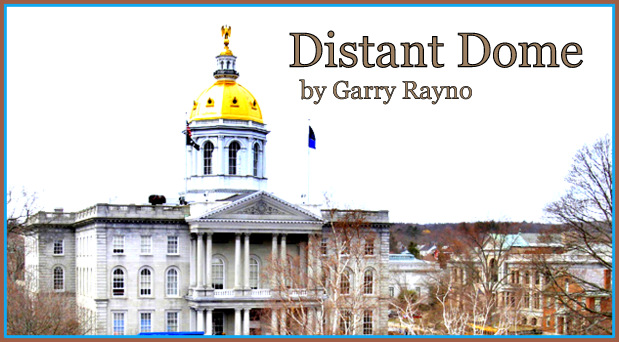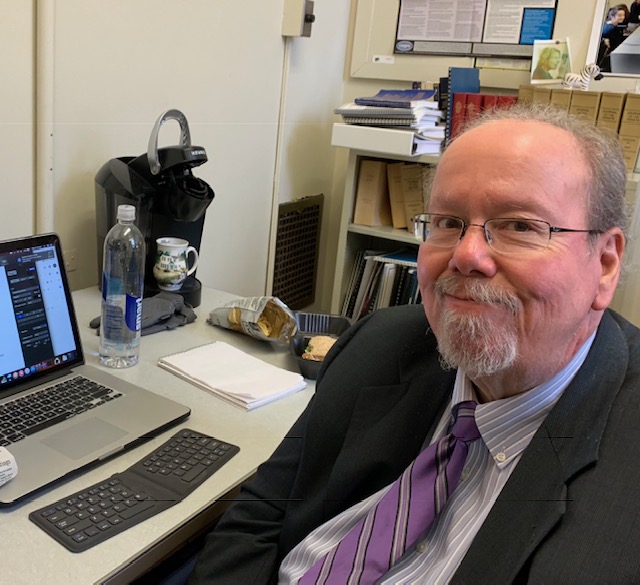
By GARRY RAYNO, Distant Dome
Last week the National Teachers Association released its “Rankings and Estimates” report of statistics on per-pupil expenditures on public education and teacher salaries.
Although the figures change year to year, what doesn’t change is that New Hampshire state government is at the bottom of the list of states when it comes to support for public education K through 12, the same place it is for its support for higher education.
That is not much support for touching the future for the state’s children.
But what the report also shows is that New Hampshire is in the top 10 for per-pupil spending in the country.
Last school year, the state average per-pupil cost of educating one student was $24,235 which ranks the state eighth in the country in expenditures.
Which states spend more than New Hampshire? Three of them are in New England and two are neighbors, Massachusetts ranks sixth in the country spending $26,262, and Vermont fourth, $27,834, and Connecticut is the other state ahead of New Hampshire ranked fifth, $27,135.
Rhode Island is just below New Hampshire in ninth, $23,289, and Maine 11th, $23,103, just missing the top 10.
No one should be surprised that New York tops the list spending $37,967 per student, Washington DC is second, $33,651, New Jersey is third, $28,707, Illinois is seventh, $25,893 and Wyoming rounds out the top 10 at $23,174.
If you look at the states with the highest per pupil spending, they are all in the Northeast except Illinois and Wyoming, which probably says more about energy and housing costs, along with consumer prices than anything else.
What those figures say is that New Hampshire spends enough on public education, as it is also usually among the top 10 states in the country academically.
The problem in New Hampshire is where the money comes from.
In every other state in the country, state government pays a far greater share of the cost of educating students than New Hampshire does and in most cases it is not close.
According to the report, the state pays about 29 percent of the total cost of education which this year is estimated to be a little more than $4 billion.
However, the figure also includes the Statewide Education Property Tax of SWEPT which accounts for $363 million of what the state pays for education aid.
Local property taxes with their widely varying rates pay 63 percent of the cost of education or about $2.5 billion of the total cost to about $1.1 billion for the state.
The federal government chips in about 8 percent.
The overreliance on local property taxes to pay for education creates winners and losers and that affects the quality of the education children receive.
That was very clearly borne out during the last education funding commission that met in 2019 and 2020.
The outcomes for students in schools with high poverty levels and lower property values were remarkably lower than those for students in property wealthy communities with higher incomes.
And that is the reason there has been a parade of lawsuits challenging the state’s education funding system from 30 years ago with the Claremont education funding suit to today with ConVal and the Rand suits that are awaiting decisions in the state Supreme Court and Superior Court.
In its Claremont decision, the Supreme Court said the state has a constitutional duty to provide its children with an adequate education and to pay for it, and it has done neither and instead has continued to rely on local property taxes and local school districts to do the work and pay for it.
The issue is not more money but that more money needs to come from the state so that the property poor districts may provide the same educational opportunities the children in property wealthy communities enjoy.
The taxpayers in the property poor communities have a much more difficult time raising the money to fund education than those in property wealthier communities who have large tax bases to fund their students’ education.
The current education funding system creates an economic death spiral for towns like Newport, Claremont, Berlin, Franklin, Pittsfield and Stratford.
The schools in those towns do not provide the opportunities most other schools can offer students, so if you are a young family, you do not want to buy a home in that school district although the valuations are low so the prices are more affordable.
The property wealthy communities have low tax rates, but the homes are more expensive and almost always increase in value making a purchase a good investment.
The educational facilities are much different as well with communities with modern facilities versus aging facilities, and iPads for everyone vs a few ancient laptops to share among students.
A classic case is Sunapee and Newport, towns next to each other, but the educational experiences for their students are in two different worlds.
Sunapee has a large lake with hundreds of second homes worth millions as a tax base, while Newport is a former mill town that has never recovered after the textile mills closed as owners chased cheaper labor in the south. Some of the mills still line the street into Newport and have never been redeveloped while the old apartment buildings where mill workers once lived still stand in dilapidated condition.
Unless there is an education funding system that puts more money into Newport Schools without raising property taxes, nothing will change.
The state that is the closest to New Hampshire in the percentage of funds for education is Missouri with 30.2 percent.
States like Mississippi, Alabama and Arkansas all put a greater percentage of state money into public education than New Hampshire does.
This legislative session, there were numerous bills that would have changed the system almost all using the statewide property tax to increase funding, as the consultants suggested for the last education funding commission.
While a statewide property tax would make the system fairer, it really doesn’t change the system and it really does not require the state to find a new revenue because it is already being raised to fund education, but with a statewide property tax would take credit for while the system would simply move the money around so that property wealthy communities pay more and property poor communities pay less.
A statewide property tax is not going to end the economic death spiral for the poorer districts, but it will put if off for a little longer.
The only bill that is still alive is one to stop the property wealthy communities from keeping their excess revenue from the statewide property tax and require the money to go to the state — about $27 million — to distribute to less well off communities.
The state intends to use about $20 million of that money to increase state aid for special education costs which the state has been underfunding as well.
At the same time Republican lawmakers have been busy trying to create a second education system through the Education Freedom Account program that has already cost state taxpayers $76 million and will cost hundreds of millions of dollars in short order while subsidizing the wealthy for unaccountable alternative education programs.
That is not attempting to fix the current system, it is spending the state’s money on a questionable education program that serves less than 5 percent of the state’s students.
The EFA money could have been spent improving needy public schools.
A serious attempt to right the education funding system will cost the state about $500 million or more or new money if you believe the judge in the ConVal case, or very little will change.
That is the kind of money that will lower property taxes for almost everyone in the state in an equitable and fair way for both students and taxpayers because both are being harmed by the current system, but neither party is willing to spend their political capital to accomplish that.
Garry Rayno may be reached at garry.rayno@yahoo.com.
Distant Dome by veteran journalist Garry Rayno explores a broader perspective on the State House and state happenings for InDepthNH.org. Over his three-decade career, Rayno covered the NH State House for the New Hampshire Union Leader and Foster’s Daily Democrat. During his career, his coverage spanned the news spectrum, from local planning, school and select boards, to national issues such as electric industry deregulation and Presidential primaries. Rayno lives with his wife Carolyn in New London.





